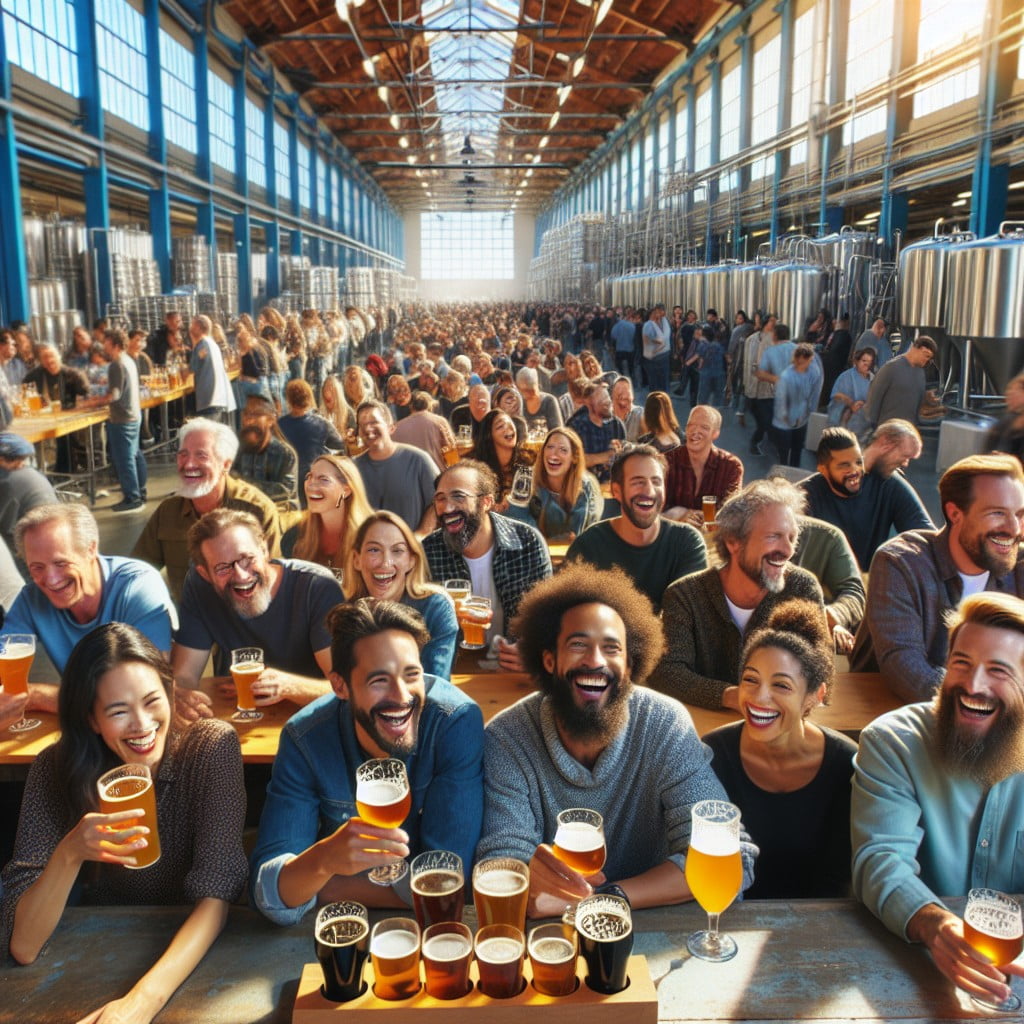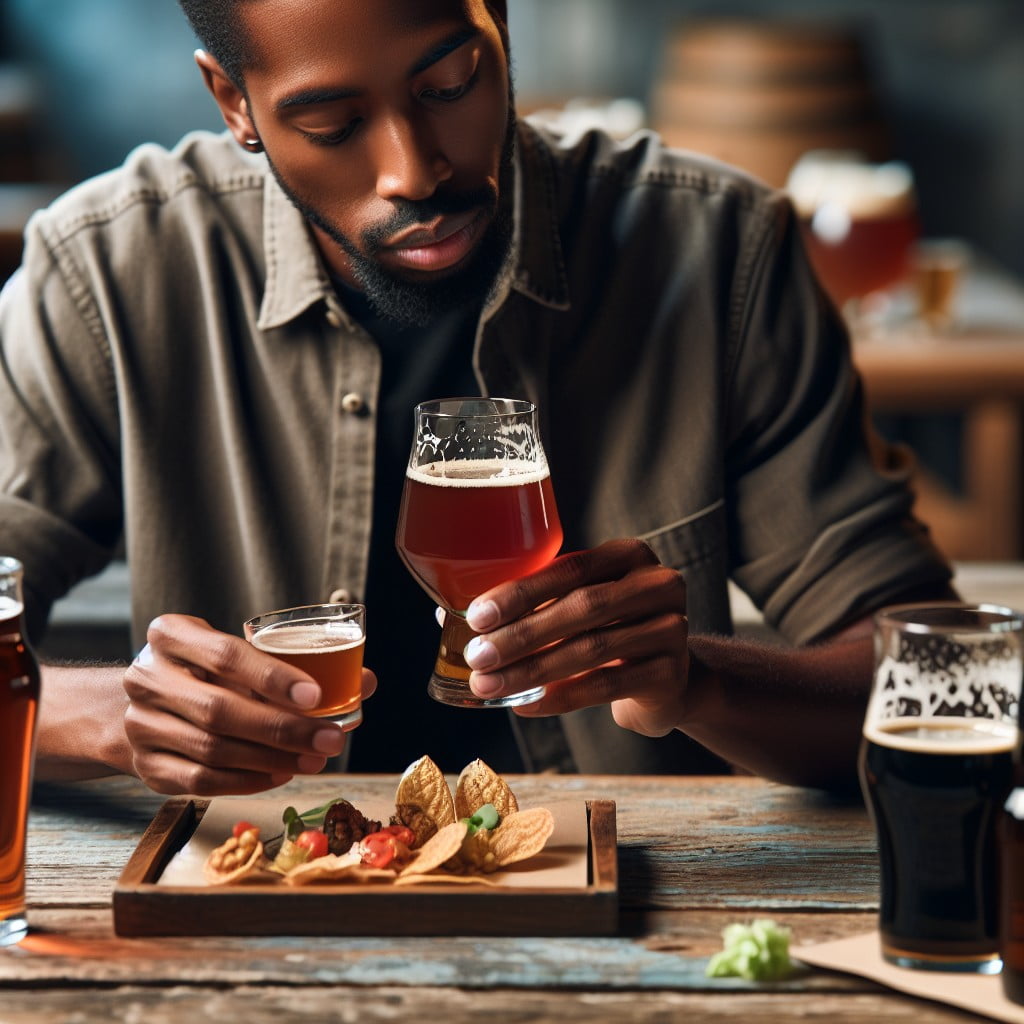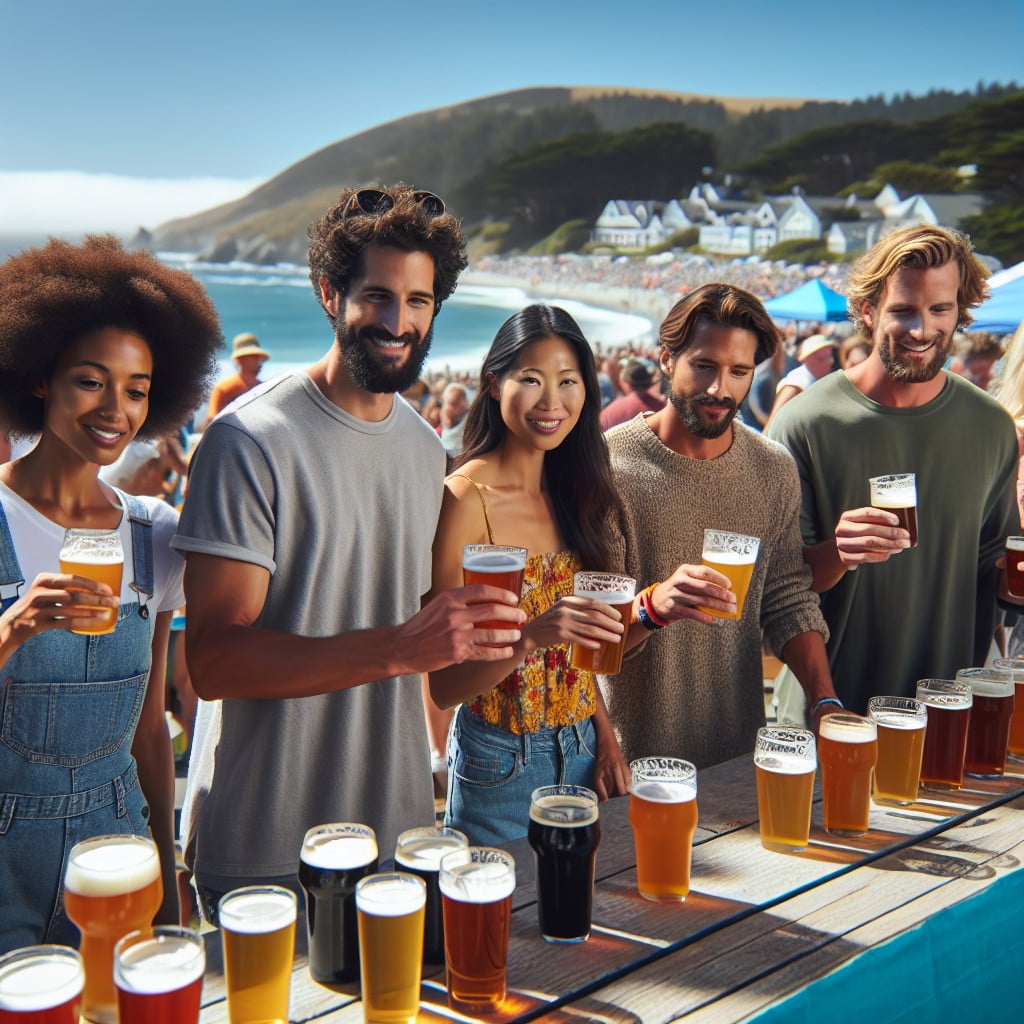Last updated on
Dive into the rich and intriguing world of craft beer, from curating unique beer pairings to attending exhilarating events, because a West Coast beer geek shares invaluable expertise which adds layers of enjoyment to your beer-loving journey.
Immerse yourself in the vibrant world of craft beer. Get prepared to delve into insightful reviews, intriguing events, strategic pairings, and so much more, tailored for a West Coast beer geek like you.
The craft beer culture extends far beyond chilled glasses and frothy pints; it’s an ever-evolving universe brimming with innovation, authenticity, and camaraderie.
This brief piece recognizes your insatiable thirst for the world of artisanal brews. From tackling the complexities of an imperial IPA to understanding the subtleties of food and beer pairing, rest assured you’ll find a treasure trove of information here, covering all your beer-centric curiosities.
Buckle up, it’s hop-o’clock!
- West Coast craft beer scene: IPA dominance, emphasis on locality.
- Craft beer reviewing: Appearance, aroma, taste, mouthfeel.
- Tasting craft beer: Visual evaluation, aroma analysis, flavor evaluation.
- Craft beer events: Plan, pace, participate in tastings and seminars.
- Beer and food pairings: Consider weight, intensity, refreshment, experiment.
Understanding the West Coast Craft Beer Scene

The West Coast has a rich craft beer scene, renowned for its adventurous and vibrant flavors. Brewers in this region aren’t afraid to experiment with a kaleidoscope of ingredients, from exotic fruits to unconventional yeasts. Let’s delve into the distinct characteristics that define this vibrant market.
1. IPA Dominance: West Coast India Pale Ales (IPAs), characterized by their strong hop flavor and higher alcohol content, are defining representatives of the region’s brewing philosophy.
2. Emphasis on Locality: From sourcing ingredients to partnering with local businesses, showcasing local heritage and sustainability plays a crucial role in the West Coast craft beer industry.
3. Experimentation and Innovation: The small-batch nature of craft brewing has led to an emphasis on innovation. Brewers aren’t restricted to standard flavors, you’ll often find unique blends like hazy IPAs, oatmeal stouts, or saison-style beers infused with local botanicals.
4. Collaboration Culture: West Coast brewers often work together, sharing knowledge and jointly creating special-edition beers. These collaborations not only foster a sense of community but also lead to exciting creations.
5. Seasonality Matters: Brewers pay special attention to the timing of their releases, often aligning with changing seasons to incorporate fresh, season-specific ingredients into their beers.
6. Education and Enthusiasm: The West Coast breweries make significant efforts to educate beer lovers about the process, ingredients, and styles, fostering a community of discerning, knowledgeable consumers.
These points paint a picture of a dynamic and evolving beer culture. It’s an exciting world that extends beyond the bottle, where every sip tells a story of the community, creativity, and craft.
Basics of Reviewing Craft Beer

Diving into the world of craft beer reviewing, it’s essential to understand the terminologies and the process. The crux of a good review rests on these key attributes: the beer’s appearance, aroma, taste, and mouthfeel. Whittle down the nuances with these pointers:
1. Appearance: Note the beer’s color, clarity, and head. Is it deep amber or pale gold? Does it have thin lace or a frothy pile?
2. Aroma: Lean in for a whiff and identify the complexity of scents. An IPA might have a floral, citrusy smell, while a stout could waft coffee or chocolate.
3. Taste: Sip and savor! Differentiate between the primary taste (upon your first sip), secondary (as it settles), and the aftertaste. Be on the lookout for the ‘hoppy’ bitterness, malty sweetness, or yeasty flavors.
4. Mouthfeel: How does the beer feel in your mouth? It might be creamy, fizzy, or slick. This aspect often complements the flavors.
Remember – taste varies significantly from person to person. The same beer could be a delight to one but displeasing to another. Express your views openly and respectfully in your review. Happy reviewing!
Key Steps in Tasting Craft Beer

Taking the perfect sip requires more than simply tipping a bottle to your lips. Here’s how to gain maximum enjoyment from a craft brew:
1. Visual Evaluation: Pour it into a clear glass to appreciate color, clarity and the head.
2. Aroma Analysis: Swirl your glass gently (without spilling!) and take a deep breath. Most of the flavor of beer is in the smell.
3. The First Sip: Start small. Don’t immediately gulp it down. Attempt to understand the complexities of the flavor.
4. Flavor Evaluation: Breath out after swallowing. This helps to release the brew’s full range of flavors from sweet to bitter.
5. Mouthfeel Assessment: Pay attention to the texture. Is it creamy, light, heavy, or fizzy?
6. Aftertaste Consideration: The taste that lingers after swallowing offers its own subtleties to uncover.
Remember, tasting and not drinking, is the key to experiencing the nuances of craft beer.
Navigating Craft Beer Events On the West Coast

Attending a craft beer event can be both exciting and overwhelming due to the variety of brews to sample. To make the most of the experience, there are several strategies to consider.
Mapping out the breweries present at the event in advance allows for a focused approach. Prioritize newcomers or breweries offering limited-edition pours. Often, these offer unique tastes not available elsewhere.
Pacing is key. With a plethora of choices, it can be tempting to hurry between tastings. Remember, it’s a marathon, not a sprint. Savor the flavors, take notes if desired, and stay hydrated between tastings.
Consider participating in guided tastings or seminars, commonly available at many events. These sessions often offer insight into the brewing process, discussions around flavor profiles, or deep-dives into specific beer styles. They provide a learning opportunity and enhance your beer-tasting knowledge.
Finally, take the opportunity to engage with brewery representatives. Their passion for craft beer and insights into their creations can enhance your appreciation and tasting experience.
Remember, the goal of a craft beer event is enjoyment. The West Coast beer scene is rich with flavor, creativity, and community—soak it in!
The Art of Beer and Food Pairings
Pairing beer with food is not just for wine lovers. This art involves skillfully matching the flavors, aromas, and tastes of your meal with the perfect brew.
To start, consider the weight – or body – of both the beer and your dish. Light beers pair nicely with lighter fares such as salads and grilled vegetables, while heavier brews complement rich, savory meals such as barbecued meats and stews.
Next, match the intensity of your beer to your food. A spicy meal might require a beer with bold hops, while a delicately flavored dish could be overwhelmed by anything other than a mild lager.
Remember, some beers can refresh the palate, making them ideal for fattier meals. Others have bitter notes that beautifully contrast sweet dishes like desserts.
Finally, experiment. Rules can guide you, but discovering your own favorite pairings can make for a truly delightful culinary experience.
The Role of Community Engagement in Craft Beer Culture
Community engagement serves a vital role in underpinning the vibrant culture of craft beer. Local breweries often act as hubs of social connections within the regional scene. By supporting small-scale, independent breweries, beer enthusiasts are also supporting their local economies and fostering a sense of community.
Volunteering or participating in brewery-led events such as beer tastings, festivals, and local fundraisers can deepen bonds between producers and consumers. Also, by giving feedback and sharing experiences, craft beer lovers often influence new batches and styles. This collaborative environment nurtures an entrepreneurial spirit and celebrates creative expression.
Digital communities are another dynamic aspect of this culture. Online beer-review platforms, social media, and apps such as Untappd help enthusiasts share recommendations and discover new brews. From civil discussions about brewing techniques to lively debates on the inevitable East Coast vs. West Coast rivalry, these platforms are vibrant, invaluable sources of shared knowledge and camaraderie.
The Hunt for Limited Release Beers and Collaborations
In the thriving craft beer industry, breweries frequently introduce limited release brews—these are specialty batches often characterized by exclusive ingredients, innovative brewing techniques or thematic designs.
Why the enthusiasm for these elusive brews? The rarity of these beers builds anticipation and provides an exciting goal for beer enthusiasts. From locally-sourced hops to distinct barrel-aging, each offering is a testament to a brewer’s creativity and skill.
Collaboration among brewers is another intriguing aspect of the craft beer community. Brewer collaborations yield unique beer creations that blend the techniques and styles of different beer houses, resulting in a brew with distinct and complex flavors.
So how does one partake in this thrilling pursuit?
- Follow Craft Breweries: Keep a close eye on your favorite breweries’ social media pages and websites. Many use these platforms to announce releases and collaborations.
- Get Involved: Participate in local brewery events or beer fests, whereby breweries often release new limited editions.
- Network: Engage with other craft beer enthusiasts online or in your community. This can often lead to shared information about upcoming releases.
Remember, while the hunt can be exciting, responsible drinking should always be foremost. It’s all about appreciating the craftsmanship behind each unique brew.
Advocacy for Responsible Drinking in the Craft Beer Community
Craft beer connoisseurs appreciate the art, science, and indulgence of their hobby, but alongside the enjoyment comes an undeniable responsibility. This niche industry places a high emphasis on mindful drinking habits.
Promotion of moderated consumption sits at the core of advocacy. Not compromising on the quality of experience, it rather heightens the joy of savouring various brews. The craft beer community champions the ‘less is more’ approach, aimed at tasting, and not excessive drinking.
As part of this awareness, many breweries promote the Drink Responsibly initiative at their events. They facilitate safe transportation options, offering beers with lower alcohol content, and creating an environment that discourages overconsumption.
Another vital facet is education, ensuring patrons understand serving sizes, and the alcohol content of different beer styles. Some breweries also offer training to their staff to identify and handle situations where someone might have crossed their limit.
Finally, sharing stories of responsible consumption and good behavior can create a supportive culture. When each community member embraces and advocates responsible consumption, the craft beer experience becomes more enjoyable for everyone.
Exploring Brewery Culture and Traditions
Immersing yourself in the distinctive cultures and traditions of breweries is an adventure in itself. Each brewery has a unique story and its traditions often reflect this. These traditions can include their brewing methods, which might hail from centuries-old practices, or the use of particular local ingredients that give the beer a unique twist.
Visiting a brewery often means encountering a diverse and colorful array of characters. Brewers love sharing their passion for craft beer, and those working in the brewery often form a close-knit community that prides itself on their craft and product. This passion and dedication can truly be felt in the final product—the beer.
Festivals and events, meanwhile, are also a significant part of brewery culture. These often feature new and exclusive brews, reflecting a creative and experimental approach that pushes the craft beer boundaries. Through these events, breweries connect with their community, as they invite everyone to participate in the appreciation and enjoyment of craft beer.
Finally, many breweries are also committed to sustainability, adopting eco-friendly brewing methods and participating in initiatives that give back to the environment. They strive to create a positive impact through their artisanal and heritage-rich creations. As part of the craft beer community, you get to be part of these inspiring, beer-loving narratives.
Rise of Mobile Canning: Freshness On the Go
The convenience of craft beer has significantly evolved with the innovation of mobile canning. This procedure is a game-changer for small breweries that can’t afford their own canning lines or those looking to package special releases without tying up their current systems.
Mobile canning enables breweries to keep their beer fresh as it decreases exposure to oxygen and light, two factors that drastically affect the beer’s taste and quality. As a result, beer enthusiasts can enjoy top-quality, fresh craft beer at their convenience, whether at home, a picnic, or a beach.
On a larger scale, mobile canning reduces the brewery’s carbon footprint, supporting the industry’s sustainability goals. It eliminates the need for heavy glass bottles, which ultimately reduces transportation weight and cost, and eases recycling processes.
However, it’s important for breweries to carefully select a reputable mobile canning service to retain their products’ superb quality. Proper sanitation and seam integrity check are pivotal in maintaining the beer’s integrity during this process. The suitability of mobile canning depends on the specific circumstances and goals of the brewery. Nonetheless, it can’t be denied that this innovation invigorates the craft beer scene by offering novel ways to deliver freshness on the go.
Legacy of the West Coast Beer Geek
Rooted in a rich history and a relentless thirst for quality brews, the chronicle of the West Coast Beer Geek is worth exploring. The legacies of these enthusiasts are marked by their passion and expansive knowledge that drives innovation and competition within the industry.
The emergence of flavorful IPAs, aromatic pale ales, and diverse brew styles sprouted from their tireless pursuit of distinctive tastes. They didn’t shy away from experimentation, embracing unique processes and rare ingredient combinations. Their influence extends beyond the suds, shaping brewery aesthetics, promotional strategies, and the rise of beer tourism.
Additionally, Beer Geeks pioneered traditions like annual beer festivals and enthusiast gatherings, injecting camaraderie and community spirit into the mix. This multi-faceted legacy continues as the West Coast Beer Geek culture evolves, maintaining its essence while adapting to changing preference landscapes and brewing innovations.
Highlighting BC Craft Beer Blogs and Communities
Diving right into the online universe, several platforms stand out for their dedicated coverage of BC’s burgeoning beer scene. ‘Beer Me BC’ provides a comprehensive overview, complete with extensive brewery map and beer reviews. ‘What’s Brewing,’ a complete digital magazine, dives deeper into discussion with industry insiders and fascinating articles on the state of craft brewing.
In terms of communities, ‘CAMRA BC’ is a vibrant, non-profit organization advocating for craft beer lovers. Their regular meetups, education events, and involvement in legislation aids in the growth of local beer culture. Online forums such as ‘BC Craft Beer Reddit’ also remain popular for their candid user reviews, industry news, and irreverent discussions.
Today’s craft beer enthusiasts have an array of resources thanks to the contributions of these platforms and communities. They not only help beginners traverse the exciting world of BC craft beers, but also serve as thriving hubs of information for seasoned beer geeks.
FAQ
What characterizes a West Coast IPA?
West Coast IPAs are characterized by their distinctive hop-forward flavor profile, traditionally bursting with dank resin notes and pine flavors, thanks to the use of Pacific Northwest-grown hops like Cascade, Chinook and Centennial.
What is the difference between a West Coast and East Coast IPA?
The difference between a West Coast and East Coast IPA lies primarily in the types of yeast used; West Coast IPAs employ clean, nearly flavorless yeasts to highlight the hops, while the East Coast style uses complex, mutated British yeast.
What is West Coast style IPA?
West Coast style IPAs are a subcategory of American IPAs, characterized by a higher use of hops, an alcohol by volume (ABV) of around 6.5 – 7.5%, and distinct flavors such as citrus and pine.
How has the West Coast IPA influenced the global beer industry?
The West Coast IPA has significantly influenced the global beer industry by sparking an international interest in hop-forward beers, leading to an upsurge of craft breweries worldwide focusing on creating unique and flavorful IPAs.
What brewing techniques are unique to West Coast IPAs?
West Coast IPAs unique brewing techniques center around using specialty hops with a focus on bitterness, and applying a late addition brewing method to enhance flavor and aromatic profiles.
What are some notable beer and food pairings for a West Coast IPA?
West Coast IPAs pair exceptionally well with dishes such as spicy Mexican food, robust cheeses like blue or sharp cheddar, and grilled meats due to their pronounced bitterness, citrus, and pine flavors.
Recap:



